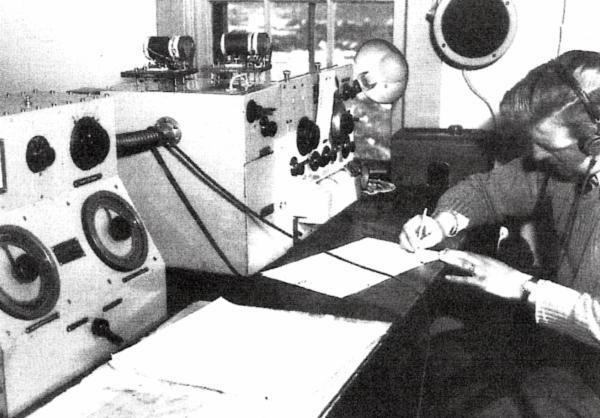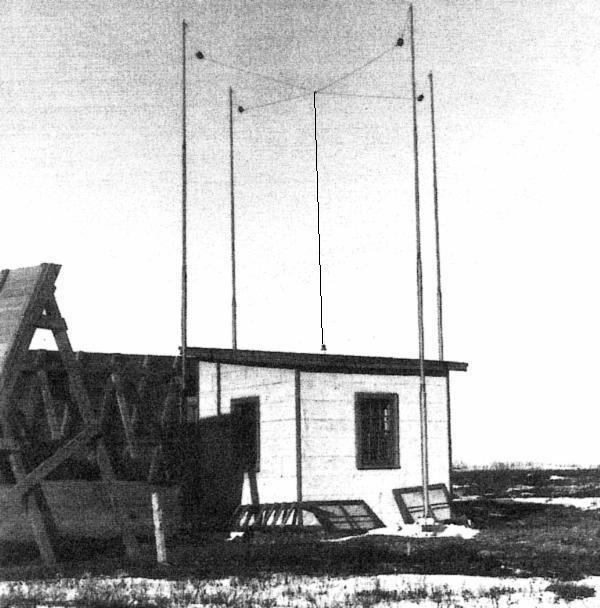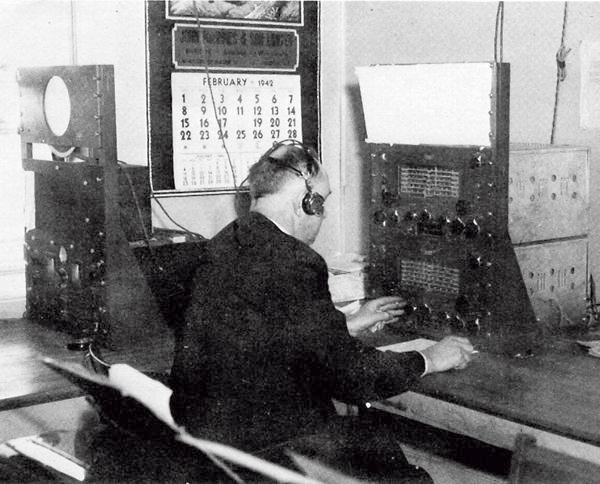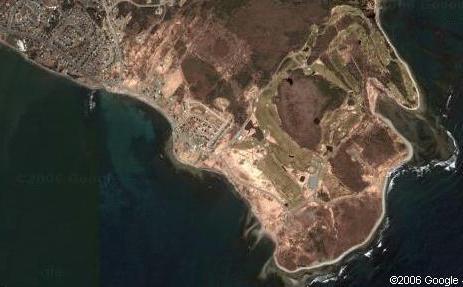 |
| Photo 1: Department of Transport employee, Mr. P Ritcey, is
operating a Marconi (UK) model DFG12 direction finding
set. (National Archives photo #PA105724 submitted by Doug Stewart). |
 |
| Photo 2: This is a very different direction finding arrangement.
Here, the Adcock array surrounds the shack. Attached to the top of the
whips are guy wires which support the 'sense' aerial which in turn attaches
to the insulator at the top of the shack. The wire is not visible in the
original, so its been added into the photo. Despite its modest appearance,
Hartlen Point was acknowledged to be one of the most accurate stations
in the Atlantic network. (National Archives photo #PA105719 submitted
by Doug Stewart). |
 |
| Photo 3: An intercept operator at Hartlen Point is using a Canadian
Marconi CSR-4 receiver. At the left side is a Hammarlund receiver most
likely the SP-200. (Photo submitted by Laval Desbiens VE2QM) |




